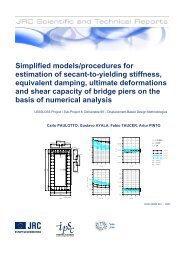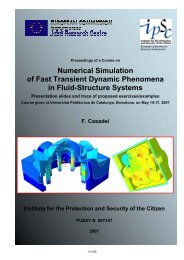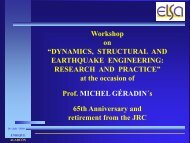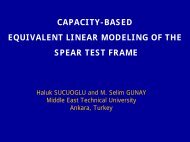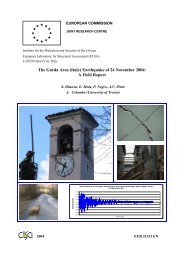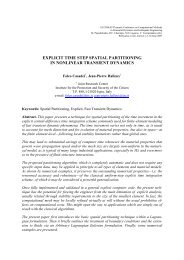Dynamic characterization of a 3-D full scale steel-concrete ...
Dynamic characterization of a 3-D full scale steel-concrete ...
Dynamic characterization of a 3-D full scale steel-concrete ...
- No tags were found...
You also want an ePaper? Increase the reach of your titles
YUMPU automatically turns print PDFs into web optimized ePapers that Google loves.
Main moment resisting framesSecondary beams3.5 m 3.5 mFigure 1. 3D view <strong>of</strong> the prototype building.Partial-strength beam-to-column joints were designed to provide suitable structuralperformance in terms <strong>of</strong> both static and dynamic behaviour. To this aim, an end plateconnection was chosen to guarantee predictable and efficient behaviour against seismicactions (Braconi et al. 2003a).Columns are partially encased composite <strong>steel</strong>-<strong>concrete</strong> columns (Braconi et al.,2003b), with hot-rolled HEB sections to guarantee significant structural efficiency as wellas improved resistance to fire. The cast <strong>concrete</strong> and corresponding reinforcement areinterrupted in correspondence to the joint. A pair <strong>of</strong> stiffening plates, set horizontally andwelded to the column, guarantee <strong>full</strong> exploitation <strong>of</strong> the panel's post-critical resourceswhen subjected to the shear forces transmitted by the beams. The stirrups, external to thecentral area <strong>of</strong> the joint, are spaced, within the critical length <strong>of</strong> the joint, as per currentstandards. The slab is fitted with the necessary reinforcing bars to activate transfermechanisms between beams and columns (prEN 1998-1, 2002).2





